Crostwight, Norfolk (†Norwich) (C.14/15)
Passion Cycle
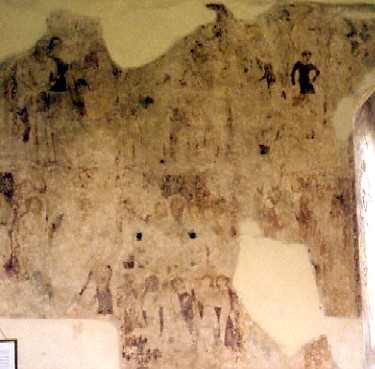
The Crostwight Passion Cycle, on the north wall, is shown in its entirety at the left. Extensive as it was originally, all the scenes are in fragments now, and not all of them are clear. As with many Passion Cycles, the order of the scenes is ‘illogical’, and the Crostwight example begins at the bottom left with the Entry into Jerusalem, shown in detail below right. Christ is at the far left,with two disciples behind him, beside the scrollwork border dividing the various scenes. His donkey has been reduced to patches of pigment, but fairly clear at the lower right is a figure, probably female, in the act of spreading a garment before him. More heads and extended hands are visible above as others do the same.
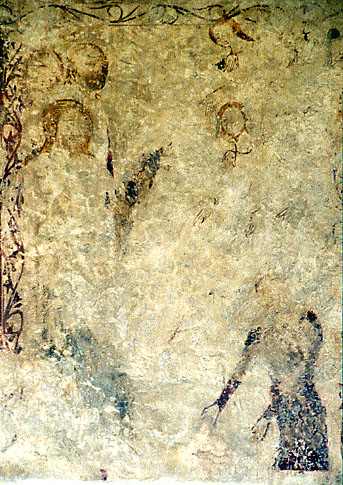
To the right of this scene is a Last Supper, too faint and fragmentary to show here, but beyond that, further right, is a scene which I think is the Washing of Feet (detail, below left). Christ is, I think, the stooping, bearded figure at the left, with the standing disciples lined up to the right. The first of these is probably Peter, his right hand raised in a gesture of protest, but the rest of this scene is very fragmentary.
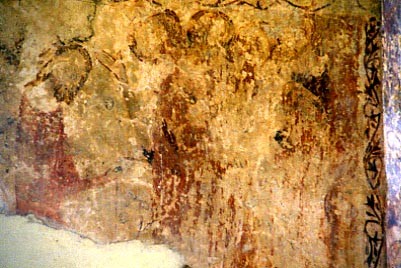
The story now continues in the upper tier, with the Arrest in Gethsemane (below, right) the first scene on the left. Here Christ’s own figure, at least, is clear, and he stands at the left, hands bound in front of him, while various hands grasp him from behind. Some details of the soldiers arresting him show – a red-clad leg at the left hand edge, a red tunic with a scalloped hem on Christ’s other side. The confused details further right might once have been Peter unsheathing his sword and/or Malchus with his lantern – Peter’s swashbuckling reaction to the Arrest appears frequently in English Passion Cycles (e.g. at Ickleton and Fairstead, in the table below); it must have held considerable appeal for ordinary folk.

Beyond this scene to the right are two more, both very faded now and not shown in detail here. The upper one is probably Christ before Herod or Pilate (there is a hint of a seated figure at the right) and the lower one possibly the Flagellation. To the right of these, and clearer, is the Crowning with Thorns (detail, left). Christ’s head, the hair very long as it is in all the scenes, and his torso are clear, as is part of the figure on the left, reaching up to set the Crown of Thorns in place. Some very small triangular shapes suggest the thorns, and part of another figure is visible at the right.
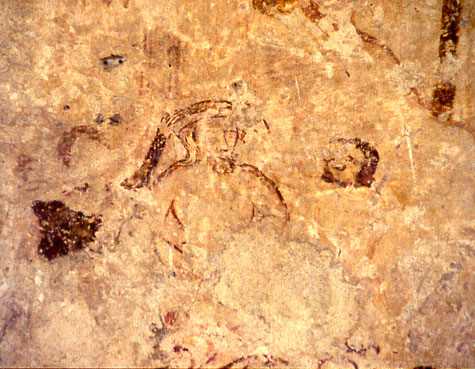
The next scene in order is the Crucifixion, placed in the upper tier above the Crowning with Thorns. Christ is placed frontally, in the centre and both Thieves were once also included. Only one remains, on the right, arms hooked over the crossbar and fastened behind – the customary way of presenting the crucified Thieves. The figure in a very dark tunic to the left of the Thief is Stephaton, identifiable by his bucket of vinegar (in dark yellow, in his right hand) and the remains of the spear on which he presented the sponge. Also present on the left is a very obscure and confused figure of Longinus in the act of piercing Christ’s side. Part of his lance, piercing Christ’s side is still visible. To the right of the Crucifixion scene, and thus squeezed into the spandrel above a window, is a further subject, now reduced to patches of paint and faint lines and thus unidentifiable.

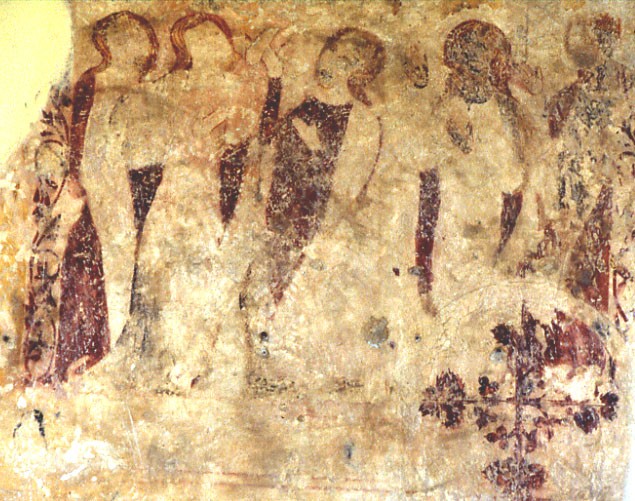
There is only one more identifiable scene on the main part of the wall, in the lowest tier. But this remaining scene of the Ascension , placed below the problematic ‘Last Supper’ mentioned above, is the clearest in the entire cycle. The Virgin Mary is centrally placed (she is usually present in Ascensions of this date). Her hair is loose and she gestures upwards in wonder, right hand raised, left hand held palm inwards across her chest There are four other figures visible; the two on the right (the Virgin’s left) seem to be women, suggesting that the painter might have followed the accounts of the Ascension given in some apocryphal stories of the Death and Assumption of the Virgin. The two figures on the other side of the group are probably male; the one next to the Virgin is probably Peter.
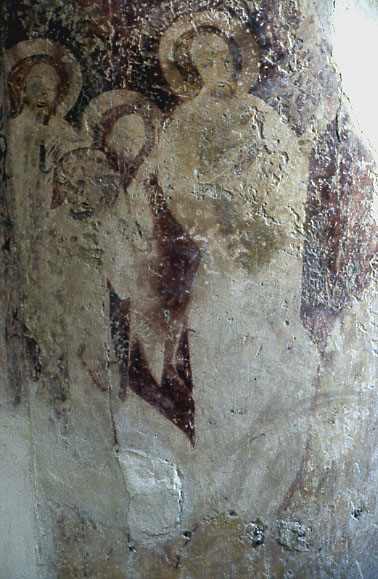
A further scene remains, and this is in the splay of the window referred to already. It is also fairly clear, and shows, unusually for a Passion Cycle of this period, the Agony in the Garden. Christ is placed in the foreground, ‘kneeling’ on the side of a slope. Behind him to the left are Peter, James and John, carefully represented, so far as space will allow, in attitudes suggesting sleep. Above this scene is the remains of another, perhaps the Resurrection.
All in all, and despite its fragmentary condition, one of the most interesting Passion Cycles in England, even if it is not comparable for either elegance or coherent arrangement of scenes to those at Little Witchingham and Great Tew. It has not been restored in recent times; earlier restoration, if any, must have been careful and restrained.
There are other paintings in the church at Crostwight, including a very interesting Seven Deadly Sins now on the site.